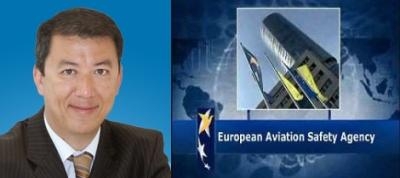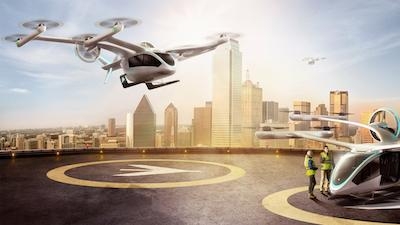Wed, Jul 03, 2019
Called The First Building Block To Enable Safe VTOL Operation And New Air Mobility In Europe
On July 2, 2019, EASA released what it says is the first building block to enable the safe operation of hybrid and electrical vertical take-off and landing (VTOL) aircraft.

"We are actively engaging with the industry to develop the right technical requirements to take benefit of the new technologies bringing safety and environmental benefits to the community," said EASA Executive Director Patrick Ky. "The establishment of a common set of conditions for the certification of these new concepts of vehicles will enable a fair competition on the European market as well as clarity for future manufacturers and their investors.”
The final Special Condition published Tuesday provides the framework for manufacturers to develop innovative VTOL aircraft. It applies to person-carrying VTOL heavier-than-air aircraft in the small category, with lift/thrust units used to generate powered lift and control. The small category covers aircraft with a passenger seating configuration of 9 or less and a maximum certified take-off mass up to 3,175 kg (7,000 pounds). The Special Condition was opened for public consultation in October 2018 and widely consulted with stakeholders worldwide. The certification objectives are made dependent on the type of operation in order to provide flexibility and proportionally and also to give a clear visibility to the industry of the objectives for their designs.

Two certification categories are introduced in this special condition namely Basic and Enhanced and are linked to the intended type of operations. A direct relationship between airworthiness and types of operations already exist, for example when certifying for VFR or IFR operations. Introducing this additional link provides greater scalability in setting safety objectives and allows to assign the highest safety levels of Category Enhanced to protection of third-parties when flying over congested areas and commercial air transport of passengers. The operational rules can then be built on demonstrated aircraft safety levels and adapted as necessary to local particularities. The Agency engaged with its international partners in order to work together towards achieving common standards.
The current regulatory framework has initially been designed for conventional fixed wing aircraft, rotorcraft, balloons and sailplanes. Propulsion was mostly provided by piston or turbine engines using fossil fuels. The introduction of new technologies and concepts of air transport requires to revisit this framework. The Agency is currently consulting with its Advisory Bodies on a new Rulemaking tasks (RMT.0731) to develop rules or amend existing ones, to address new technologies and operational air transport concepts, with the objective to be agile and to adapt the regulatory framework in line with Performance Based Regulations principles. The experience gained through the application of the VTOL special condition will feed into the Rulemaking process.
(Source: EASA news release. Images from file)
More News
A Puff Of Smoke Came Out From The Top Of The Engine Cowling Followed By A Total Loss Of Engine Power On May 9, 2025, about 1020 mountain daylight time, an experimental amateur-buil>[...]
From 2022 (YouTube Edition): Jenny, I’ve Got Your Number... Among the magnificent antique aircraft on display at EAA’s AirVenture 2022 was a 1918 Curtiss Jenny painstak>[...]
Very High Frequency (VHF) The frequency band between 30 and 300 MHz. Portions of this band, 108 to 118 MHz, are used for certain NAVAIDs; 118 to 136 MHz are used for civil air/grou>[...]
“From approximately November 2021 through January 2022, Britton-Harr, acting on behalf of AeroVanti, entered into lease-purchase agreements for five Piaggio-manufactured airc>[...]
From 2008 (YouTube Edition): US Fish and Wildlife Service Chooses The Kodiak To Monitor Waterfowl Populations Waterfowl all over North America may soon have to get used to a new ab>[...]
 NTSB Prelim: Lee Aviation LLC JA30 SuperStol
NTSB Prelim: Lee Aviation LLC JA30 SuperStol Classic Aero-TV: Curtiss Jenny Build Wows AirVenture Crowds
Classic Aero-TV: Curtiss Jenny Build Wows AirVenture Crowds ANN's Daily Aero-Term (05.30.25): Very High Frequency (VHF)
ANN's Daily Aero-Term (05.30.25): Very High Frequency (VHF) Aero-News: Quote of the Day (05.30.25)
Aero-News: Quote of the Day (05.30.25) Classic Aero-TV: Quest Kodiak Enhances Migration Monitoring Programs
Classic Aero-TV: Quest Kodiak Enhances Migration Monitoring Programs




